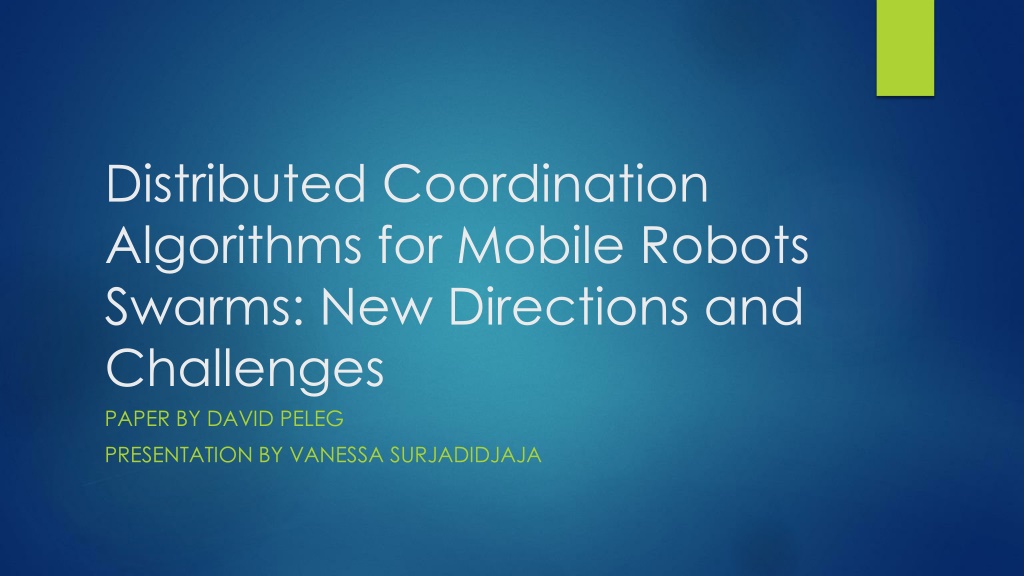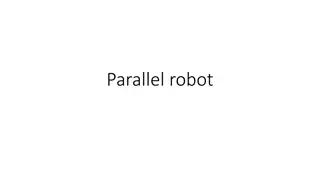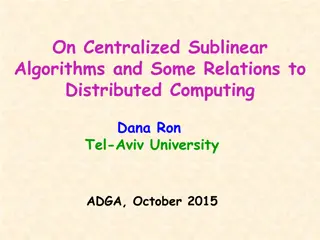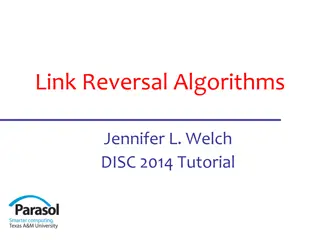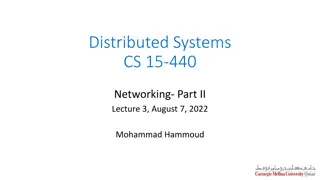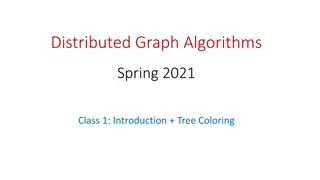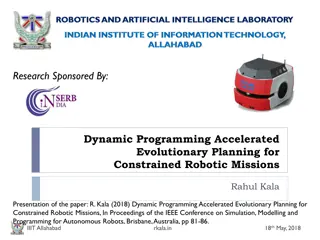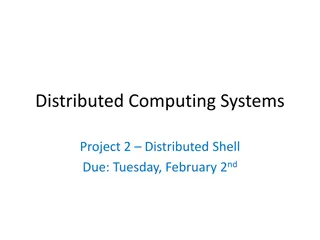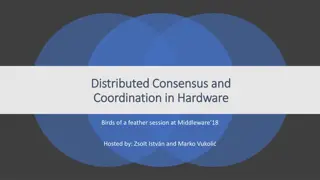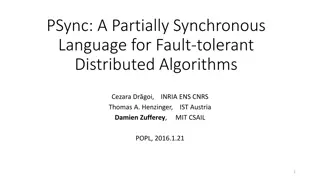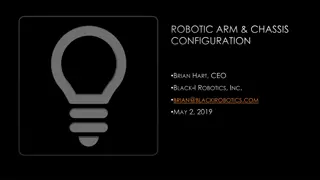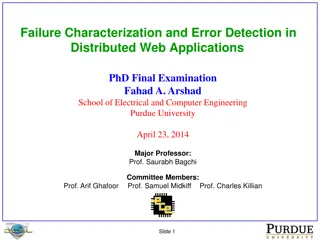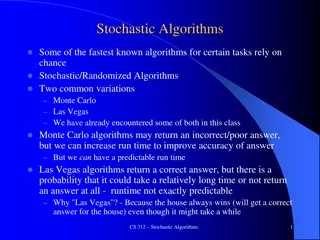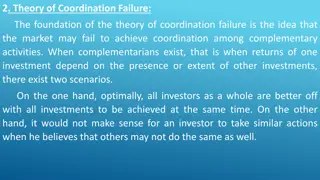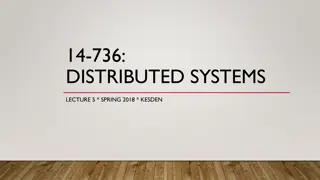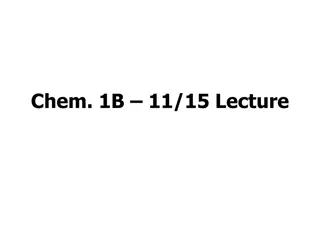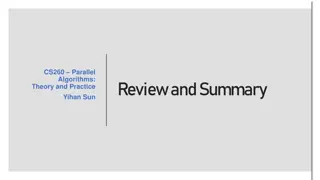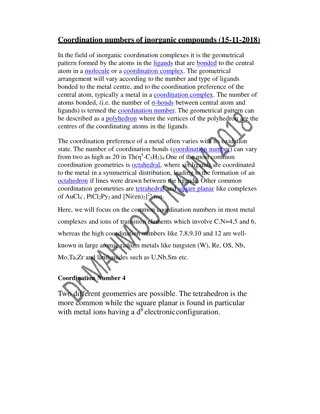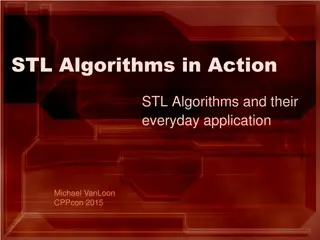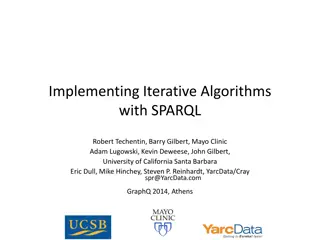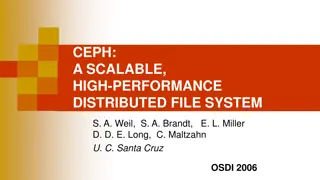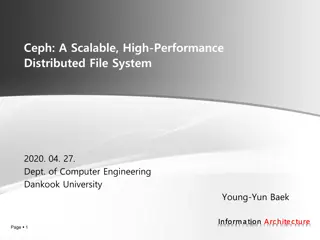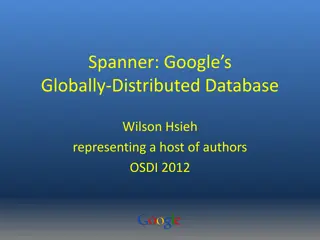Distributed Coordination Algorithms for Robotic Swarms: Challenges and Innovations
Explore the world of robotic swarms through the lens of distributed coordination algorithms. Discover various coordination tasks, synchronization models, and algorithm results, alongside the evolution of robot models for enhanced efficiency. Delve into coordinated movement, flocking behaviors, and the implications of different operational cycles. Uncover the significance of modding robot models and the impact of memory on simplifying coordination processes.
Download Presentation

Please find below an Image/Link to download the presentation.
The content on the website is provided AS IS for your information and personal use only. It may not be sold, licensed, or shared on other websites without obtaining consent from the author. Download presentation by click this link. If you encounter any issues during the download, it is possible that the publisher has removed the file from their server.
E N D
Presentation Transcript
Distributed Coordination Algorithms for Mobile Robots Swarms: New Directions and Challenges PAPER BY DAVID PELEG PRESENTATION BY VANESSA SURJADIDJAJA
Overview What is a robotic swarm? Types of coordination algorithms Coordination algorithm results Mods and Future Experiments
Robotic Swarms Cost-efficient to build Easy to replace if damages occur Simplistic and limited in: Energy resource Nasaswarmathon.com Communication Processing power
Coordinated Algorithms Coordinated Movement: Gathering Convergence Pattern Formation fondation.ulb.ac.be%2Fen%2Fswarm-intelligence-robotics-dorigo Flocking Additional Coordination Tasks: Partitioning Spreading Exploration Mapping Patrolling Searching Obstacle avoidance Avoiding bottleneck
Coordinated Algorithms Robot operation cycle: Look: identify location or other robots. Compute: execute algorithm. Move: taxis towards a point. Synchronization model: Semi-synchronous: robots operate on the same clock cycles, but not all robots are active during all the cycles. Asynchronous: each robots acts independently and can be at different states of the cycle: wait, look, computer, and move. Synchronous: all robots operate on the same clock cycle and all robots are active in all cycles.
Coordinated Algorithm Results Many studies have focuses on identifying the minimal capabilities a swarm of robots must have to successfully complete a basic task. These studies have shown mixed results with regards to the success rate of the swarm. Suzuki and Yamashita found that in a semi-synchronous model, 2 oblivious robots cannot be gathered without common orientation.
Modding the Robot Model As of 2005, most of the literature focused on the behaviour of oblivious robots (e.g. no coordinate system, orientation, scale, compass, and no means of explicit communication ) Equipping robots with a small amount of stable memory allows for the simplification of robot coordination algorithms. Robots can recognize their computational phase.
Modding the Robot Model Including common orientation. E.g. using a common point of reference or establishing North. Explicit means of communication. Can solve coordination problems. Means of identification and signaling.
Future Exploration How do we discard the assumption of infinite precision and instead rely on approximation? Peleg suggests the relaxations in the definitions of certain common tasks. Enhanced fault tolerance through redundancy. A model with Byzantine faults makes gathering tasks almost impossible (or result in high complexity). How do we avoid Byzantine faults among swarm robots?
Reference D. Peleg. Distributed Coordination Algorithms for Mobile Robot Swarms: New Directions and Challenges. LNCS 3741, 1-12 (2005).
